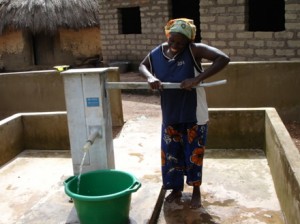About six million people in Ghana yet to get potable water
 About six million people in remote communities nationwide are yet to be served with potable water by the Community Water and Sanitation Agency (CWSA).
About six million people in remote communities nationwide are yet to be served with potable water by the Community Water and Sanitation Agency (CWSA).
It has, however, catered for about 12.835 million people, under its Rural and Small Town Water Project with 38,000 bore holes, 706 pipe systems in small towns and more than 4,000 hand-dug wells in communities.
Mr Benedict Kubabom, the Director in-charge of Planning and Investments of CWSA, said this at a forum with stakeholders in Bolgatanga.
It was organised to disseminate the Agency’s findings from a baseline research on the functionality and service levels of its existing Rural and Small towns Water facilities provided in the Upper East Region.
Mr Kubabom said the Region had benefitted from 2,870 boreholes, 36 small town pipe systems and 500 hand-dug wells under the Rural and Small Town Water facilities by the end of last year.
He said the Water Company was making huge investments to ensure efficient distribution of water and urged the authorities to undertake regular monitoring and supervision to improve and sustain the service.
He said the CWSA, through collaborative funding from the Government and development partners, had instituted a SMARTer Water Sanitation and Hygiene (WASH) project with Information Communication Technology (ICT) architecture for supporting rural and small communities to improve their service delivery.
The forum, which attracted the Regional Coordinating Council, MMDAs, Development partners, WASH partners and specialists, service providers, and NGOs, also aimed to identify gaps in rural and small towns water monitoring and explore emerging issues that needed to be collectively addressed.
Mr Mohammed Issahaku, the Coordinating Director of the Talensi District Assembly, who made a statement on behalf of the District and Municipal Assemblies, urged them not to renege on their responsibilities but rather take up the mantle of ensuring effective monitoring in the various districts.
All the MDAs took turns to respond to questions on what worked well and what did not and to find ways to address them.
Source: GNA
